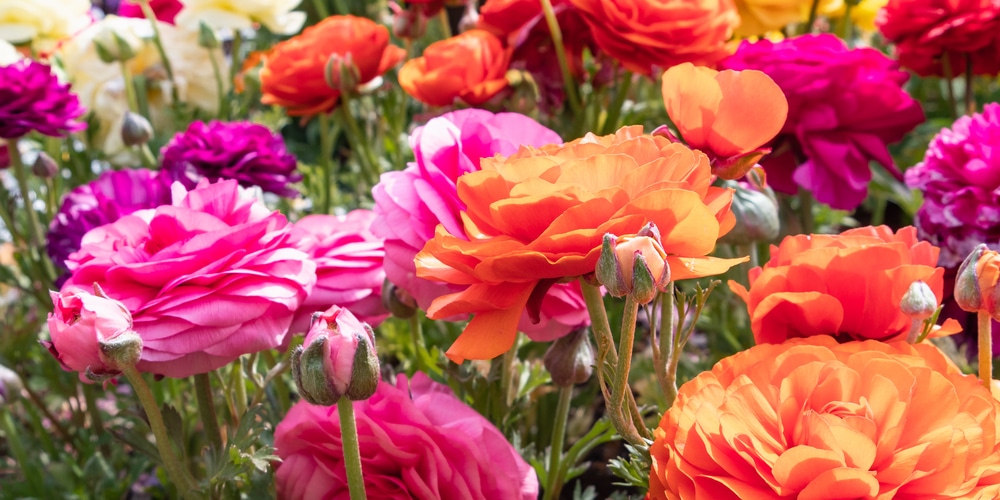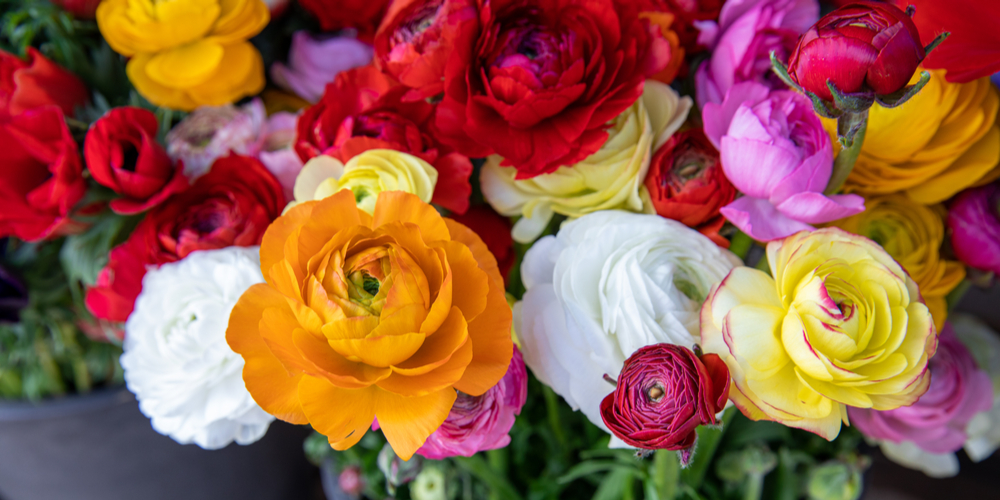Ranunculus is a perennial wedding and cut flower originally from the Midwest and the Mediterranean. They have considered spring flowers, and most of their growth happens in cool winter months. Also, they can be grown in zones between 4-9, and it all depends on the gardener’s timing.
In general, growth zones vary with seasons. As for a ranunculus, growing it in late fall suffices for zone 9. Growing ranunculus in Zones 8 and 9 are usually favored by mild winters and lengthy springs. Doing so produces a bloom in mid-spring that continues to grow as the season progresses.
But that’s not all. Remember, ranunculus will begin to shut down if the temperatures get to mid-70’s. There is more to just timing growing between mid-October to late December. As you read on, you will discover the tips on how to grow ranunculus in zones 8 and 9, how to choose the right spot, and the conditions necessary for growth.
How to Grow ranunculus in zone 8 and 9

You have to understand that ranunculus can’t grow from bulbs. Rather, they surface from tubers and corms. Corms for ranunculi in zones 8 and 9 are planted either in fall for late winter or early spring yields. They can be successfully grown if these steps are carefully followed.
Ranunculus corms need to be soaked at room temperature for about four hours and then planted. Soaking aids in jumpstarting growth. Do not leave them to be waterlogged. Rather, remove them from water when their size doubles the unsoaked, and the root hairs turn white.
After choosing a spot with good drainage, you have to ensure you place the corms at angles that allow full exposure to the sun. Ranunculi are likely to become perennial if planted in favorable growth spots.
Ensure you bury the tubers with the root tip facing down. The corm’s top part is fuzzy and less tough. This is the part where roots emerge, and at times, the corm may have the previous year’s leave or stem.
Again, you are not supposed to broadcast the ranunculus corms on the ground. Appropriate spacing needs to be done to allow each stalk room for bud growth. Spacing also allows you room to work on the ranunculus plants. Therefore, it will be best to consider planting three inches deep and 5 inches apart.
Zones 8 and 9 are warmer when compared to other prior zones. In as much as you may have the right spot to grow your ranunculi, water shortage need not be ignored. You may want to introduce mulch to help the soil retain moisture vital for early growth. Mulching also keeps the soil cool when the weather becomes harsh.
How to choose the right planting spot for ranunculi in zones 8 and 9
As usual, choose a spot with good drainage and where full sunlight and shade can be met. The spot should have fertile soil and be easy to irrigate. In zones 8 and 9, seasons heat to more than 70’s. It will be best to plant the ranunculus with peonies or provide light shade.
For better outcomes, you should introduce a teaspoonful of fertilizer in the areas where the corms are planted. The soil should be well tilled and somewhat delicate. Water the planting spot before inserting the corms. Also, you should get them watered sufficiently after insertion unless it’s raining. This will help to keep the small roots alive and moist.
Growing ranunculus in zone 9: Up to you
If all is done correctly by the time spring comes, you should have a pink and white decoration of ranunculi in your garden. Growth is stimulated by pruning. Each time you ranunculi, you get more sprouts. By all means, fill your vases. Since you are in warmer climates, you always have to ensure they get shade and enough sunlight. Failure to water them will also cause them to dry out.
Before the wet summer, you have to pull out the corms and store them in dark places with low humidity. Ranunculi do not like wetness. When temperatures get to the 80’s, they will stop blooming.
Conclusion
Growing ranunculus in zones 8 and 9 can be quite challenging if it’s your first time. It needs careful considerations of the conditions that favor its growth. Finding the right spot and providing these conditions is the hefty mind-blowing part. But once achieved, the ranunculi become perennial. See, that hard work pays off!
